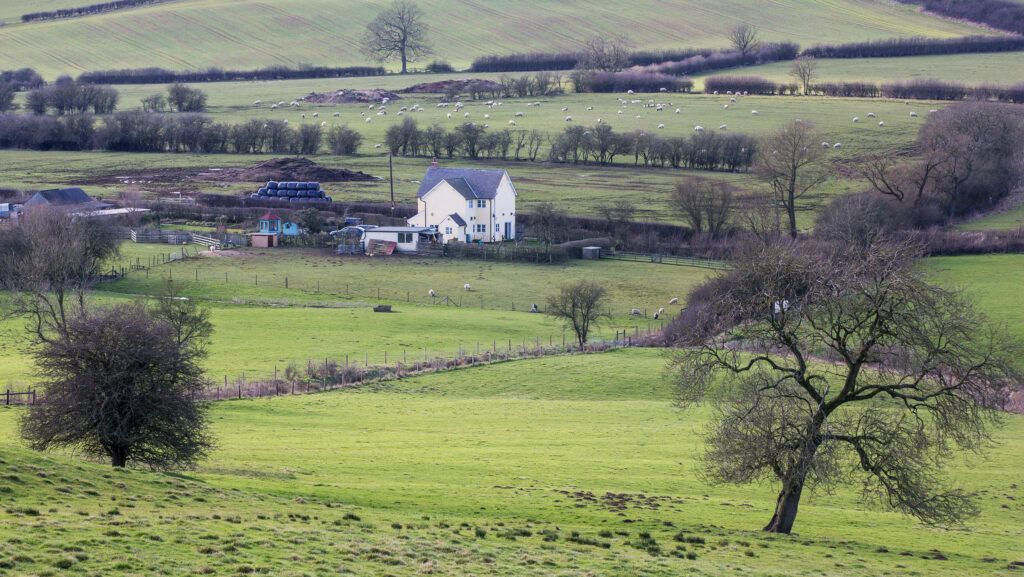Rural groups reject figures in new IHT impact assessment
 © Tim Scrivener
© Tim Scrivener Landowner representatives have lambasted a new report from the influential Centre for the Analysis of Taxation (CenTax) which suggests relatively few farms will be caught by inheritance tax, while dismissing the industry’s proposed “clawback” alternative.
According to the report, the introduction of 20% inheritance tax on farm assets of more than £1m from April 2026 will affect “between 480 and 600 farm estates per year” – a figure much in line with the Treasury’s estimate of 520.
See also: IHT changes violate Brexit deal, say legal campaigners
CenTax also suggests that just 43% of these would meet the definition of “small family farms”, adding that 86% of estates would be able to pay any IHT dues out of “non-farm assets”, without any need to sell land.
Report author Arun Advani insists the CenTax figures are robust, being based on five years’ worth of IHT relief claims data (unlike the Treasury’s single year) and fully adjusted to allow for asset and land inflation up to 2027.
But the figures are at odds with farming industry estimates, including from the Central Association of Agricultural Valuers (CAAV), which says nearer 2,500 farms a year will be affected.
CAAV secretary Jeremy Moody was adamant that CenTax did not have the data to show the real value of farming’s operational assets – “the livestock, machinery and stocks”.
“That will now be taxable, understating the impact as HMRC only asks for historic costs, not the market value that will now be needed,” he said.
The Country Land and Business Association (CLA) is also far from convinced.
CLA president Victoria Vyvyan said: “Just like Treasury ministers, CenTax has used a tiny amount of data to justify their view, and failed to speak to a single farmer or family business owner.
“If they had, they would understand about the devastating consequences of the policy on the economy.”
Clawback
The CenTax report also dismisses the industry’s “clawback” proposals, whereby an incoming generation would only pay IHT if they chose to sell the farm within seven years of inheriting it.
CenTax says this would not meet the government’s objective of reducing the “concentration” of IHT reliefs, would not raise any more money for the Treasury, and could not be put in place legally by April 2026.
But it does accept the need to better target the IHT burden, so that those who are just “passive investors in farmland” pay a greater share.
It therefore suggests a “minimum share rule”, removing agricultural property relief (APR) and business property relief (BPR) entirely for those estates for which farm and business assets are account for less than 40% of the total estate value.
This would allow for full APR and BPR on up to £5m, so exempting many more smaller, genuine farms.
Another plan would be to impose an “upper limit on relief” – charging full IHT above £10m – which would then allow full APR and BPR to be claimed on the first £2m of an estate.
Basis for debate
While any government U-turn is unlikely, Mr Advani says the report should provide the basis for more constructive debate.
“Our suggestions show how the IHT plans could be adjusted in a useful way that removes relief from estates that could already afford to pay their IHT bill out of non-farm assets, and uses the revenue from this to offer more protection to small family farms,” he said.
Tenant Farmers Association chief executive George Dunn agreed there was a need to “finesse” the government’s current IHT plans.
He welcomed suggestions to increase the threshold above which IHT might be charged to £2m and that this should be transferable between spouses and civil partners.
But he regretted that the report made no provision for farmers now in their 70s and 80s to transfer their assets free of IHT without the need to survive another seven years.
“There is a strong moral case that such a change in policy should be accompanied by reasonable transitional measures, to allow those most impacted by the potential cliff edge that will be placed in front of them to alter their course and plan accordingly,” said Mr Dunn.
Timely opportunity
NFU president Tom Bradshaw said he was pleased the report recognised that working farms would be disproportionately affected by IHT.
“There are interesting adjustments within the report that appear to mitigate the impacts on the most vulnerable in our community and enable farms to invest in the future of food production with greater confidence,” he said.
“This new independent analysis presents a positive and timely opportunity ahead of the Finance Bill for fresh conversations with government and officials that would allow us all to work together to address issues of fairness and affordability within the proposals.”
The Treasury said it too welcomed the report, suggesting it endorsed its current plans.
A spokesman said: “We designed these upcoming reforms so they address stark unfairness in the distribution of reliefs, while ensuring that the few estates facing higher bills can pay them in a manageable way.
“This report supports that.”
